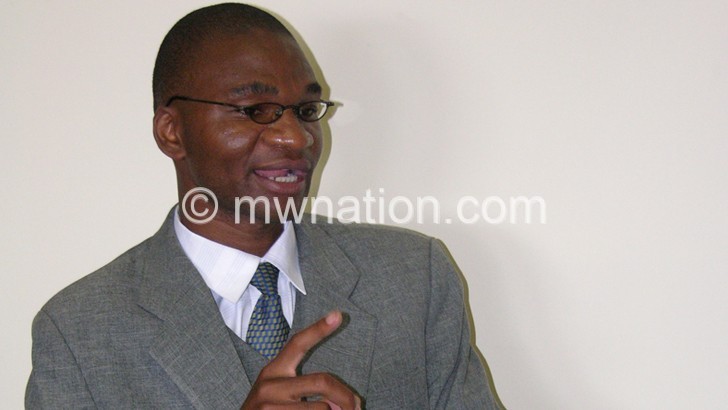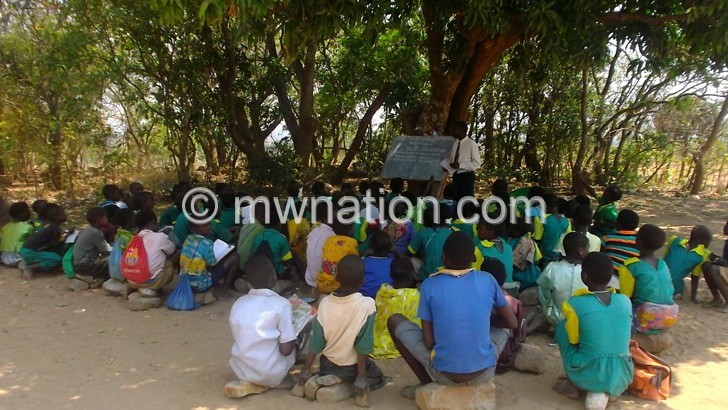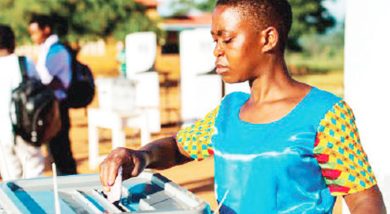Shortage of qualified teachers haunts primary schools
Malawi faces a critical shortage of qualified teachers in its primary schools with the qualified-teacher ratio hovering at 1:75 which is far below international standards.
The current Sustainable Development Goals (SDGs) have put the target at 1:31 over the period of 2015 to 2030 from the Millennium Development Goals (MDGs) one, which phased out last year, but was set at 1:40.

With these figures, it means Malawi faces a challenge of more than doubling the number of qualified teachers to reach the international targets needed for improving quality education in primary schools. Even with the current national target at 1:60—which is according to the National Education Sector Plan (Nesp) 2008-2017—the figure is only arbitrary as it is way below international targets.
And despite the policy of recruiting only those with Malawi School Certificate of Education (MSCE), a substantial number of Junior Certificate of Education (JCE) teachers in all the education divisions still exists. Meanwhile, experts want government and development partners to increase investments in teacher training and retention to reduce shortage of qualified teachers in primary schools.
Malawi Education Policy indicator on qualified teacherpupil ratio is that the lower the ratio, the better in terms of providing quality education. However, with a qualified teacher-pupil ratio at 1:75, says Limbani Nsapato, Malawi cannot experience improvements in student performance and quality education.
Nsapato, who is Malawi country representative for Edukans, an international non-governmental organisation headquartered in the Netherlands, providing technical and financial support to local NGOs in education in Africa, Asia and Latin America-underlines that shortage of qualified teachers does explain the poor education outcomes facing primary education in the country.

Underlining poor outcomes in Malawi’s primary education, the 2015 Education Information Management Systems (Emis) shows that more than half of Standard One entrants fail to finish the full cycle of primary education.
Though this cannot be solely blamed on shortage of qualified teachers, Catholic University of Malawi (Cunima) lecturer in education Dr Steve Sharra finds shortage of qualified teachers as pivotal.
“We cannot begin to talk about quality education without a qualified teacher. We just cannot. We do not have an option, but advocate more qualified teachers,” he said.
Government, however, has been steadfast in responding to the shortage of qualified teachers in primary schools. Due to increased intake in teacher training, through the Initial Primary Teacher Education (IPTE) programme running from 2012 to 2020, and the Open Distance Learning (ODL), currently phased, there has been notable increase in number of qualified teachers. The 2015 Emis shows that the number of teachers increased from 53 031 in 2011 to 71 363 in 2015, representing a 34.6 percent increase. However, the rate grew at an annual average rate of 7.8 percent.
Annual analysis shows an increase of teachers from 66 732 in 2014 to 71 363 in 2015. The increase represents a growth of 6.5 percent for school calendar 2014/15. However, on quality issues, though currently the Ministry’s policy is only to recruit teachers with MSCE, the Emis shows that there are still a substantial number of JCE teachers in all the education divisions with the Central East Education Division (Ceed) having the highest.
The report shows that Malawi has 9 854 teachers with JCE and 51 866 with MSCE. Surprisingly, Malawi has just 38 teachers with diplomas and above, something education lecturer at Chancellor College Dr Nellie Mbano wants to be changed for Malawi needs to move towards having primary school teachers with degrees.
In terms of gender, male qualified teachers have increased from 34 006 in 2012 to 46120 in 2015, but female qualified teachers have declined from 22 528 to 17 935 over the same period.
The drop in the number of female teachers has been considered a big blow to girl’s education for girls consider female teachers their immediate idols and source of inspiration.
But why does Malawi still have the challenge of qualified teacher shortage? Nsapato says the key issue is inadequate capacity for the current teacher training programmes due to lack of infrastructure and low funding.
He also thinks unclear career path for teachers due to lack of policy guidance; poor status of financial and non-financial incentives such as salary increase, housing, promotion and recognition, among others, are only a nail on the coffin.
“These factors make the teaching profession unattractive and so leads to high number of education graduates and practising teachers leaving the profession for greener pastures,” he says.
Sharra-while agreeing with Nsapato-adds another dimension. He faults the deployment policy for getting more teachers in urban than rural areas, leading to imbalanced qualified teacher ratio.
Sharra also notes that insistence in primary schools on concentrating on Standard Eight is complicating things further.
“The practice is that in classes, say from Standard One to Five, you will only have a single teacher handling every subject in those classes.
Most teachers skew towards higher classes, especially Standard Eight because our schools are examination oriented.
“This is creating pressure in these lower classes on a single teacher and complicating pupilteacher ratio. We need to look into this,” he says.
The 2015 Emis, indeed, shows that drop out rates are high from Standard One to Five. Government, while conceding the challenge of qualified teachers, says it is doing all it can to reduce the qualified teacher ratio.
Lindiwe Chide of the Ministry of Education, Science and Technology says government first intervention is ensuring that there are more teacher Training Colleges (TTCs) in the country.
“We now have six public TTCs and we will, each year, be adding three more. Additionally, we have also recognised private TTC. So you can see that this is really helping to increase the number of qualified teachers,” she says, adding that each year they add more 5 000 teachers in the system.
Chide, however, admits that teacher redeployment and recruitment is their ministry’s biggest challenge because their success depends on the variables that are external to them. For deployment, she says, the ministry faces a challenge of spouses following each other in urban areas which is an issue they cannot control.
She adds that few graduate teachers are willing to work in rural areas because of lack of social amenities.
This is why, she noted, Malawi needs to scale up on having Rural Growth Centre (RGC) to help lure teachers in the rural areasyet RGCs implementation is beyond the reach of the Ministry of Education.
“As a ministry, our success here depends on other ministries,” she says, underlining the same on the challenge of recruitment.
Currently, almost 6 000 IPTE primary school teachers have not been recruited by the ministry despite completing their two-year training last year.
Chide, however, says the ministry cannot make any recruitment unless Treasury authorises because everything is supposed to work within the set wage bill.
“We have had problems before of just recruiting more teachers only to end up working without being paid. We don’t want that anymore. For the IPTE 9, the plan is to get them recruited in April next year so that once recruited, they should start getting their salaries in the same month,” she says.
To cap it all, Chide says, all factors equal, government is keen to reduce qualified teacher pupil ratio to levels as set by the SDGs.
However, with the education budget plummeting from 22 percent of the National Budget in the 2012/13 to 18.2 percent in 2015/16, it remains to be seen if, among various education outcomes, the qualified teacher pupil ratio will, by 2030, almost halve from the current 1:75 to 1:31.





